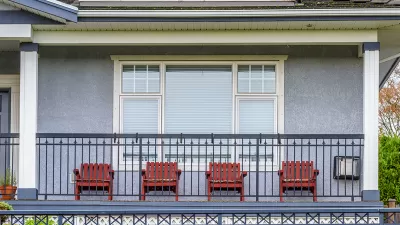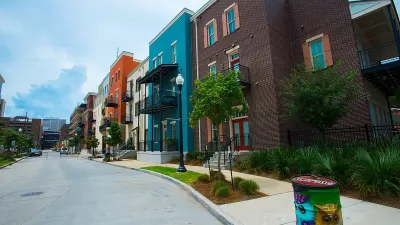Housing advocates tend to agree that we need to supplement market-rate luxury development with subsidized affordable housing, but rarely do we ask the market to provide housing for people further down the income ladder. That's bad policy.

There has been a renewed interest in the role that the real estate market can play in solving our growing affordable housing crisis. For decades "affordable housing" has been the near exclusive domain of the public sector, but the crisis has reached the point where we are now calling for all hands on deck. Can private capital, private development companies, and market-rate housing developments help make housing affordable for everyone?
This is a controversial topic. Here on Rooflines and elsewhere, housing advocates fall into two competing camps: one argues that we need market-rate development (even luxury development) to bring housing costs down, and the other asserts that building more high-end housing makes things worse for low-income people.
I think my piece published earlier this year, “Why We Must Build,” put me firmly in the pro-development camp—with reservations—but I worry about the increasingly pervasive assumption that the market can only build housing for the very rich.
Housing advocates tend to agree that we need to supplement market-rate luxury development with subsidized affordable housing, but rarely do we ask the market to provide housing for people further down the income ladder. This dichotomy of new market-rate housing only for the rich and new affordable housing only for the poor has become the de facto housing strategy in most American cities. We can do better.
The market is not going to provide for the housing needs of the poor—we need publicly subsidized social housing—but we can’t give up on the market providing new housing for middle- and working-class people.
In a follow-up piece I'll outline what I think it would look like if we were to encourage (and frankly just allow) the market to build housing for middle-income and working-class people, but right now I want to point to a different way of thinking about why building only for the rich is bad policy.
The idea that building high-cost housing will eventually help everyone by freeing up lower-cost units elsewhere in the market is known as "filtering." Peter Cohen recently posted a broad critique of this approach, which boiled down to "filtering works too slowly." I agree, though I don’t see that as a reason to block new development (better to address a problem slowly than not at all). I think there is a much bigger problem with filtering as a housing strategy.
FULL STORY: Housing Doesn’t Filter, Neighborhoods Do

Alabama: Trump Terminates Settlements for Black Communities Harmed By Raw Sewage
Trump deemed the landmark civil rights agreement “illegal DEI and environmental justice policy.”

Planetizen Federal Action Tracker
A weekly monitor of how Trump’s orders and actions are impacting planners and planning in America.

The 120 Year Old Tiny Home Villages That Sheltered San Francisco’s Earthquake Refugees
More than a century ago, San Francisco mobilized to house thousands of residents displaced by the 1906 earthquake. Could their strategy offer a model for the present?

Ken Jennings Launches Transit Web Series
The Jeopardy champ wants you to ride public transit.

BLM To Rescind Public Lands Rule
The change will downgrade conservation, once again putting federal land at risk for mining and other extractive uses.

Indy Neighborhood Group Builds Temporary Multi-Use Path
Community members, aided in part by funding from the city, repurposed a vehicle lane to create a protected bike and pedestrian path for the summer season.
Urban Design for Planners 1: Software Tools
This six-course series explores essential urban design concepts using open source software and equips planners with the tools they need to participate fully in the urban design process.
Planning for Universal Design
Learn the tools for implementing Universal Design in planning regulations.
Clanton & Associates, Inc.
Jessamine County Fiscal Court
Institute for Housing and Urban Development Studies (IHS)
City of Grandview
Harvard GSD Executive Education
Toledo-Lucas County Plan Commissions
Salt Lake City
NYU Wagner Graduate School of Public Service





























